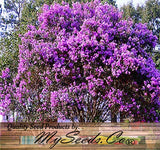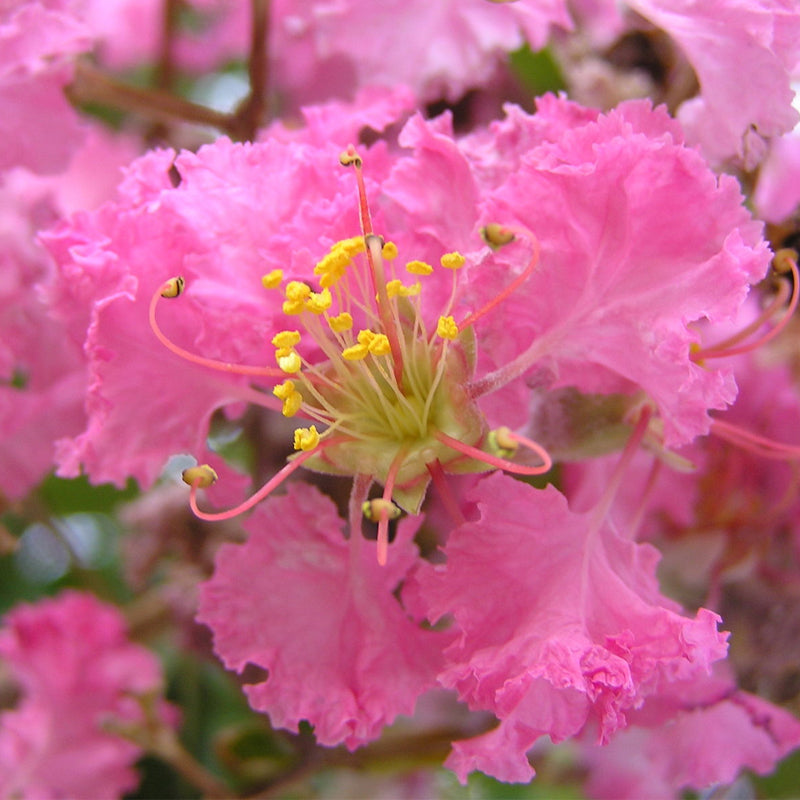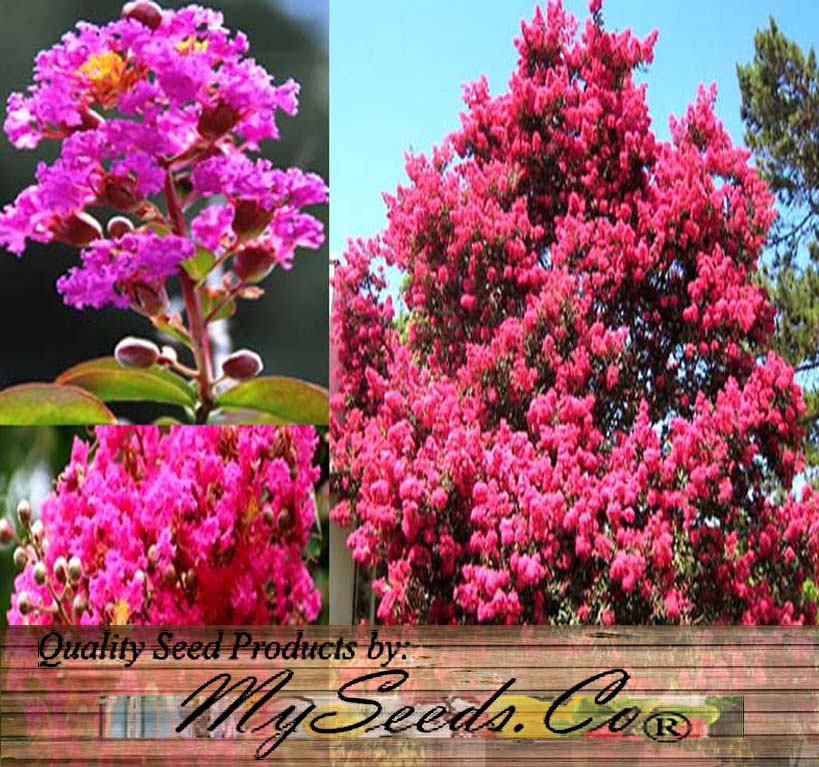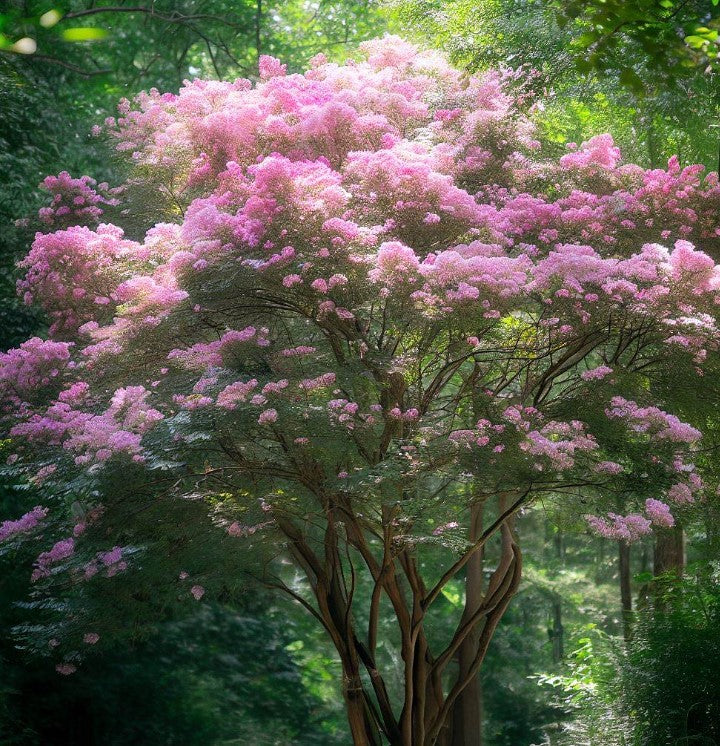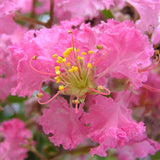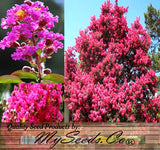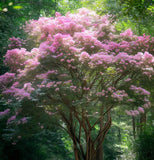Lagerstroemia indica, Mixed (Crape myrtle, Common Crapemyrtle)
Lagerstroemia indica (Crape myrtle, Common Crapemyrtle) is a deciduous flowering tree or shrub that is highly valued for its vibrant and long-lasting blooms. Native to East Asia and parts of Australia, Crape Myrtle has become popular worldwide for its showy flowers, attractive bark, and overall ornamental appeal.
Appearance: Crape Myrtle is a multi-stemmed tree or large shrub that typically reaches a height of 10 to 25 feet (3 to 7.5 meters), although some varieties can grow taller. It has a spreading, vase-shaped growth habit and develops a smooth, mottled bark that peels to reveal patches of beige, brown, and gray. The foliage is dense, with simple, elliptical leaves that are arranged alternately along the stems.
Flowers: One of the most striking features of Crape Myrtle is its abundant and colorful flowers. The flowers form in large clusters called panicles at the tips of the branches. They come in a wide range of colors, including shades of pink, purple, red, and white, depending on the variety. The blooming period typically begins in late spring or early summer and can continue for several weeks or even months, depending on the climate and variety.
Leaves: The leaves of Crape Myrtle are simple, smooth, and usually dark green. They are elliptical or lanceolate in shape, with finely serrated edges. The foliage provides an attractive backdrop for the vibrant flowers and turns shades of orange, red, or yellow in the fall, adding to the tree's seasonal appeal.
Fruit: Following the flowering stage, Crape Myrtle produces small, round capsules that contain numerous tiny seeds. These capsules are not particularly showy and tend to dry and split open, releasing the seeds. While the capsules are not a prominent feature, they can add some visual interest to the tree.
Cultural Significance and Uses: Crape Myrtle is widely cultivated for its ornamental value. It is commonly planted in gardens, parks, and along streetscapes due to its beautiful flowers and attractive bark. It is known for its ability to thrive in warm and sunny locations, making it well-suited for Southern U.S. states and other regions with a similar climate. There are numerous cultivars available, offering a range of sizes, flower colors, and growth habits to choose from.
Crape Myrtle is relatively low-maintenance and can tolerate a variety of soil conditions, although it prefers well-drained soil. It requires regular watering during the establishment phase but becomes more drought-tolerant once established. Pruning can be done in late winter or early spring to maintain shape and promote healthy growth.
Overall, Lagerstroemia indica, or Crape Myrtle, is a popular flowering tree or shrub known for its colorful and abundant blooms. Its vibrant flowers, attractive bark, and ability to tolerate heat and drought make it a favored choice for adding beauty and interest to landscapes.
Botanical Name : Lagerstroemia indica
Common Name : Common Crapemyrtle
Height : 40 ft
Spread : 15- 20 ft
Germination Info : Seed does not require a pre-treatment.
Hardiness zone : 8-10
Average seed per ounce : Approx. 13750

